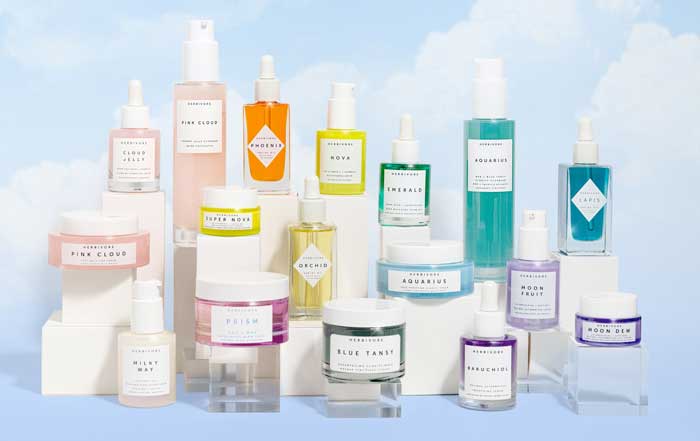The global wellness industry has entered a period of dramatic transformation, driven by the explosive growth of e-commerce and the increasing integration of digital technologies into everyday life. What was once a sector defined by physical products and in-person experiences—spas, yoga studios, and organic retail stores—has evolved into a vibrant digital marketplace where wellness is personalized, data-driven, and globally connected. By 2025, the wellness economy, valued at more than $7.5 trillion, is increasingly shaped by online commerce platforms, artificial intelligence (AI)-powered personalization, and digital community engagement.
As consumers seek greater control over their health and wellbeing, e-commerce has emerged as both the medium and the marketplace that connects them to global wellness brands. Platforms such as Amazon, Sephora, Lululemon, and Rituals are now as much digital ecosystems as they are retail destinations. They use AI algorithms, data analytics, and influencer-driven marketing to anticipate trends and curate holistic experiences that blend physical and emotional wellbeing. The rise of online wellness shopping also coincides with a deeper societal shift—one that places mental health, sustainability, and transparency at the core of purchasing decisions.
For readers of wellnewtime.com, this transformation is not only about business; it represents a cultural redefinition of how wellness is perceived, purchased, and personalized in the digital age.
The Rise of the Wellness Consumer in a Digital Era
The wellness consumer of 2025 is hyper-connected, health-aware, and deeply value-driven. Consumers across major markets such as the United States, United Kingdom, Germany, and Japan are not merely buying products; they are seeking experiences that align with their physical, emotional, and environmental values. They expect retailers to demonstrate ethical supply chains, sustainable production, and verifiable results—criteria that have become fundamental to brand loyalty in the wellness sector.
E-commerce has amplified this expectation by making global access instantaneous. From personalized nutrition subscriptions offered by Thorne to AI-driven skincare analysis from Foreo, the wellness consumer is empowered to curate their own health journey through data and discovery. Marketplaces like Wellness on Amazon and Alibaba Health have broadened consumer access to international brands while also allowing smaller wellness startups to reach global audiences with minimal barriers to entry.
At the same time, the digital environment has blurred the boundaries between wellness and lifestyle. Online platforms such as wellnewtime.com/lifestyle.html and wellnewtime.com/wellness.html reflect this evolution, providing content that merges health, fitness, mindfulness, and beauty into an interconnected digital narrative.
Data, Personalization, and the AI Revolution in Wellness Retail
One of the most significant forces reshaping wellness retail is the application of artificial intelligence and big data. Brands now leverage predictive analytics to anticipate consumer needs, offer personalized product recommendations, and optimize inventory management. For instance, L’Oréal’s Modiface uses AI to analyze facial features and skin conditions, allowing consumers to virtually test beauty and skincare products before purchasing. Similarly, Nike integrates biometric data from wearable devices to provide custom fitness and apparel recommendations through its e-commerce platform.
These advances are redefining what “personal wellness” means. Consumers are no longer limited to one-size-fits-all products; they expect tailored solutions backed by science and data. AI-driven tools analyze everything from sleep quality and stress levels to dietary patterns, creating individualized wellness experiences that evolve in real time.
E-commerce platforms are also becoming trusted wellness advisors. Apps integrated into retail ecosystems, such as Apple Health or Fitbit Premium, are influencing purchasing behavior by syncing biometric data with product suggestions. Consumers can now buy supplements, meditation subscriptions, or ergonomic furniture optimized for their lifestyle—all within the same digital environment.
Such technological convergence is expanding rapidly in Asia. In countries like South Korea and Singapore, where digital adoption is extremely high, wellness e-commerce platforms such as Olive Young and Shopee Health are leading the way in AI-driven wellness retail. Learn more about the evolving intersection of wellness and innovation in today’s global market.
🌟 Wellness E-Commerce Evolution Timeline
The Digital Transformation of Global Wellness Retail
The Pandemic’s Enduring Legacy: Health Awareness and Digital Convenience
The pandemic accelerated e-commerce adoption across all sectors, but none more profoundly than wellness. Lockdowns and public health anxiety transformed how people accessed healthcare, fitness, and self-care. Digital platforms became the bridge between isolation and wellbeing, facilitating the rise of telemedicine, virtual fitness, and digital therapy.
Companies like Peloton, Calm, and Noom became household names as consumers turned to online solutions for physical and mental wellness. Meanwhile, health-focused marketplaces expanded rapidly, offering vitamins, home fitness equipment, and organic foods that could be delivered at a click.
Even as physical stores reopened, consumer behavior remained permanently altered. According to research from McKinsey & Company, over 60% of global consumers continued purchasing wellness products online post-pandemic, preferring the convenience, transparency, and personalization offered by digital retail environments.
This behavioral shift has reshaped wellness brand strategies. Companies now operate with a digital-first mindset—where e-commerce is not merely an extension of their business, but its foundation. The continued growth of digital wellness reflects a larger cultural movement toward what Harvard Health Publishing calls “preventive wellness”—a proactive approach to health that blends technology, psychology, and consumer empowerment.
Explore how the new wave of wellness-focused brands is shaping consumer behavior across industries.
Social Media and Influencer-Led E-Commerce
Social media has become the new wellness marketplace. Platforms like Instagram, TikTok, and YouTube have given rise to a new generation of wellness influencers—certified trainers, nutritionists, psychologists, and lifestyle creators—who guide audiences toward mindful living and conscious consumption. This ecosystem of digital influence is redefining brand-consumer relationships.
For instance, Lululemon’s ambassador program integrates real-life instructors and athletes into its digital storytelling, bridging authenticity and aspiration. Meanwhile, micro-influencers in regions such as Thailand, Brazil, and Italy have turned their online wellness communities into profitable e-commerce ventures, often through affiliate partnerships and digital product launches.
Influencer-led e-commerce thrives on authenticity and relatability—qualities that traditional advertising often lacks. Consumers perceive influencers not just as marketers, but as peers who share their personal journeys toward balance and wellness. This dynamic has transformed social media into a vital channel for discovery, education, and purchase.
The integration of “shop now” features on social platforms has streamlined this experience. A consumer can watch a yoga tutorial, click a product link, and complete a purchase within seconds—all without leaving the app. As a result, the line between content and commerce has dissolved, ushering in what Forbes describes as “social wellness retail.”
Discover more about how the digital wellness community intersects with fitness and health trends across markets worldwide.
Sustainability and Ethical Commerce in Wellness
As wellness merges with environmental consciousness, sustainability has become both a moral imperative and a competitive differentiator in e-commerce. Modern wellness consumers demand transparency about product origins, manufacturing processes, and carbon footprints. Brands that fail to meet these expectations risk alienating a generation of ethically driven buyers.
E-commerce has amplified this scrutiny by enabling instant comparisons and verified certifications. Online platforms now display detailed sustainability data, ingredient sourcing, and packaging materials. Companies like The Body Shop, Dr. Bronner’s, and Aveda have built entire business models around environmental responsibility, while newer entrants such as True Botanicals and Cocokind are redefining eco-luxury through digital storytelling.
In Europe, particularly in Scandinavia, sustainability in wellness retail has reached new heights. Countries such as Sweden and Denmark lead in circular beauty packaging and carbon-neutral logistics, supported by innovative e-commerce platforms like Lyko and Blissim. Similarly, in Australia and New Zealand, local wellness brands are championing biodiversity protection through digital retail partnerships and climate-positive production.
Learn more about environmental trends in wellness and how they are redefining retail ethics across the globe.
The Integration of Virtual Experiences into Wellness Commerce
The evolution of e-commerce in wellness retail is not limited to digital storefronts—it now extends into immersive virtual environments that engage the senses and emotions. As technology continues to advance, virtual reality (VR) and augmented reality (AR) are playing transformative roles in helping consumers experience wellness before making a purchase. Virtual wellness studios, 3D product simulations, and immersive consultations are bridging the gap between digital convenience and personal connection.
For example, Mindbody and ClassPass have expanded their online offerings by introducing VR-enhanced meditation and fitness sessions, enabling users to “attend” studios from anywhere in the world. Similarly, skincare and cosmetics brands like Charlotte Tilbury and Clinique are using AR mirrors to simulate how products will appear on different skin tones and under various lighting conditions. This fusion of technology and sensory experience transforms e-commerce into a form of experiential retail, where consumers participate rather than passively consume.
Moreover, the growth of the metaverse—a shared digital space where real and virtual realities converge—is giving rise to virtual wellness destinations. In these spaces, users can interact with AI coaches, attend mindfulness events, and even join group fitness challenges. For instance, FitXR and Supernatural VR offer immersive workouts designed to reduce anxiety and enhance motivation through gamified environments. These developments illustrate how wellness e-commerce is moving toward experiential, community-based models that prioritize engagement over transactions.
Learn more about evolving mindfulness and digital wellbeing practices that integrate technology with emotional health.
Globalization and Cross-Border Expansion of Wellness E-Commerce
E-commerce has dissolved geographic barriers, enabling wellness brands to transcend national boundaries and reach audiences across continents. From Europe’s organic beauty exports to Asia’s herbal supplement industries, cross-border trade in wellness products has surged. The integration of digital payment systems, advanced logistics, and translation technologies has allowed small and medium-sized wellness enterprises to compete globally alongside established multinationals.
In China, the rapid rise of JD Health and Tmall Global has revolutionized wellness retail by connecting international brands with Chinese consumers seeking premium vitamins, fitness products, and eco-conscious cosmetics. Meanwhile, India’s growing middle class and digital adoption have made it a key market for global wellness brands such as Herbalife Nutrition and The Honest Company.
In Europe, platforms like LookFantastic and Cult Beauty have positioned themselves as curators of ethical wellness products, offering brands that emphasize clean ingredients and transparency. Similarly, in North America, e-commerce has allowed independent wellness entrepreneurs to expand through marketplaces like Etsy, where handmade, organic, and personalized wellness items thrive.
These international dynamics are reshaping global trade flows. Wellness is no longer a regional niche; it has become a shared aspiration across cultures, adapted to local traditions and lifestyles. Learn more about how global trends are shaping wellness commerce through wellnewtime.com/world.html.
Subscription Models and the Era of Continuous Engagement
Subscription commerce has emerged as one of the most powerful business models in the wellness sector. Rather than selling individual products, brands are building long-term relationships through recurring, personalized deliveries that reinforce consistency and loyalty. Companies such as Care/of, Athletic Greens, and Ritual have set new standards for digital wellness subscriptions by combining high-quality ingredients with data-driven personalization.
The appeal lies in predictability and convenience. Consumers receive curated wellness solutions—ranging from vitamins and skincare to meditation access and fitness gear—delivered to their doorsteps monthly. Advanced analytics ensure that these subscriptions evolve with consumer needs. For example, Gainful uses online questionnaires to tailor protein blends to individual fitness goals, while Moon Juice adjusts supplement recommendations based on stress and sleep assessments.
Subscription models also promote sustainability by reducing overproduction and optimizing supply chains. Through direct-to-consumer channels, brands can manage inventory efficiently and maintain stronger relationships with customers. This approach aligns with the growing preference for mindful consumption—where wellness is not a one-time purchase but a continuous journey.
For a deeper exploration of evolving health-focused routines and practices, visit wellnewtime.com/health.html.
Corporate Wellness and E-Commerce: A New Business Frontier
The wellness e-commerce revolution is not limited to consumers; corporations are embracing it as part of their human resource strategies. As remote and hybrid work models become permanent fixtures, organizations are investing in digital wellness platforms to support employee health and productivity.
Companies like Gympass, Virgin Pulse, and Wellable offer subscription-based access to virtual wellness programs, meditation apps, and fitness challenges. Employers use these platforms to enhance engagement, reduce burnout, and promote a culture of health. This corporate shift is reshaping e-commerce demand, as wellness retailers form partnerships with enterprises seeking scalable and measurable employee wellness solutions.
In markets like Germany, Canada, and Australia, corporate wellness investments are expected to exceed $90 billion by 2026, largely driven by online purchasing of health benefits and digital fitness solutions. Employers are also increasingly gifting wellness products—such as ergonomic tools, nutritional subscriptions, and relaxation kits—through e-commerce channels designed for B2B fulfillment.
As businesses realize that wellness is directly linked to performance and retention, e-commerce platforms are expanding their B2B offerings to meet this growing demand. The convergence of business and wellness is creating a new ecosystem where health becomes part of the corporate brand identity.
Learn more about the evolving business of wellness and employee health shaping organizational culture in 2025.
Integrating Wellness into Smart Homes and Digital Ecosystems
The rise of smart home technology has transformed how consumers experience wellness in their everyday lives. Modern homes now integrate devices that monitor air quality, sleep patterns, and mental wellbeing, creating a seamless ecosystem of digital health. Companies such as Google, Amazon, and Samsung are leading this evolution, embedding wellness functionalities into connected home systems.
For instance, Amazon Halo combines fitness tracking with emotional health insights, while Philips Hue lighting systems synchronize circadian rhythms for better sleep and mood regulation. The result is a form of “ambient wellness,” where health optimization occurs passively through technology rather than active intervention.
E-commerce plays a critical role in this transformation. Consumers can easily purchase and integrate wellness technology products directly from online marketplaces, supported by AI-powered recommendations that ensure compatibility with existing systems. The integration of wellness into smart homes reflects a broader trend of preventive care—where technology anticipates needs before they become health challenges.
These advancements align with the growing consumer desire for holistic lifestyles that merge convenience, health, and sustainability. Readers interested in the intersection of innovation and wellbeing can explore related insights at wellnewtime.com/innovation.html.
The Role of Wellness Startups and Entrepreneurs
Startups are the lifeblood of innovation within the wellness e-commerce ecosystem. Unlike traditional brands, they are agile, niche-focused, and deeply attuned to emerging consumer values. From plant-based nutrition to AI-driven mental health platforms, wellness entrepreneurs are redefining what it means to build a brand in 2025.
Platforms such as Indiegogo and Kickstarter have accelerated this trend, allowing wellness innovators to crowdsource funding and connect directly with early adopters. Examples include Eight Sleep, a smart mattress company optimizing rest with biometric tracking, and Alo Moves, a digital fitness platform offering on-demand classes and mindfulness training. These startups leverage e-commerce not merely as a sales channel, but as an ecosystem for storytelling, community building, and customer feedback.
Venture capital investment in wellness startups continues to grow. In 2024 alone, the global wellness tech sector attracted more than $10 billion in new funding. This influx of capital has created a fertile environment for innovation—particularly in markets like Singapore, Sweden, and the United States, where health technology ecosystems are highly advanced.
Wellness startups are also redefining authenticity by focusing on transparency, inclusion, and social purpose. Many emphasize ethical sourcing, fair labor practices, and environmental stewardship as central to their brand identity. The ability to scale such values through e-commerce is transforming not only how wellness is sold, but what it stands for.
Challenges Facing the Wellness E-Commerce Revolution
Despite the optimism surrounding e-commerce in wellness retail, challenges remain. One of the most pressing issues is data privacy. As consumers share sensitive health information to receive personalized recommendations, brands face increasing pressure to safeguard data integrity and comply with global regulations such as GDPR and CCPA.
Another challenge lies in the authenticity of wellness claims. The proliferation of online sellers has made it difficult to distinguish between evidence-based products and misleading marketing. This has led to growing calls for stricter regulatory oversight and third-party verification systems. Organizations such as The Global Wellness Institute and World Health Organization (WHO) are working to establish clearer standards for digital wellness products.
Additionally, while e-commerce has democratized access, it has also intensified competition. Small brands face difficulty standing out amidst algorithm-driven marketplaces dominated by large corporations. Success in 2025 requires more than a good product—it demands storytelling, customer engagement, and ethical integrity.
E-commerce also carries environmental costs. Increased packaging, logistics emissions, and returns contribute to the global carbon footprint. However, many companies are responding with sustainable fulfillment solutions, including carbon-neutral delivery and recyclable materials. The challenge, therefore, is to align digital convenience with ecological responsibility.
Learn more about global wellness industry updates at wellnewtime.com/news.html and how companies are addressing ethical and environmental pressures.
Future Outlook: The Next Phase of Wellness E-Commerce
Looking ahead, the convergence of technology, personalization, and sustainability will define the future of wellness retail. By 2030, it is expected that over 80% of all wellness-related purchases will occur online, supported by hybrid retail models that combine digital engagement with real-world experiences.
The integration of AI, blockchain, and the Internet of Things (IoT) will enable unprecedented transparency and customization. Consumers will use biometric tokens to access wellness services, track product authenticity, and receive real-time recommendations based on personal health data. Retailers will transition from product sellers to wellness partners—providing ongoing guidance, diagnostics, and preventive solutions.
Virtual reality will continue to blur the lines between physical and digital wellness, creating immersive environments where consumers can shop, meditate, and train within shared virtual spaces. Meanwhile, sustainability will remain the moral compass of the industry. Companies that integrate ethical production, fair labor, and regenerative business models will earn the trust and loyalty of global consumers.
For readers of wellnewtime.com, the wellness e-commerce revolution is not just a business story—it is a narrative about humanity’s evolving relationship with health, technology, and the planet. As we move further into the digital age, wellness will cease to be a luxury. It will become an integrated, data-informed, and globally accessible right—driven by innovation, inclusivity, and collective responsibility.
In summary, the e-commerce transformation of the wellness retail landscape is redefining how people connect with health and happiness. From virtual fitness to AI-driven personalization, and from sustainable packaging to cross-border expansion, the digital age is turning wellness into a borderless experience. What remains constant is the pursuit of balance—a harmony between human well-being and technological progress that continues to guide the future of the global wellness economy.










